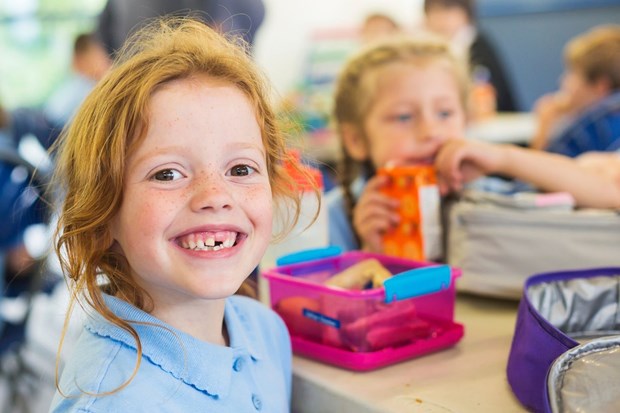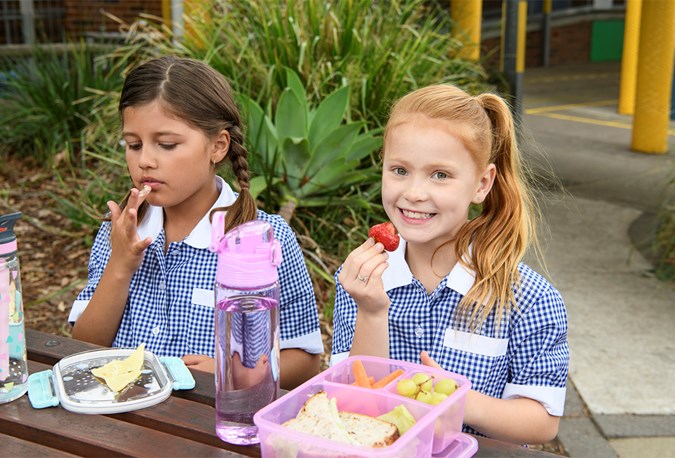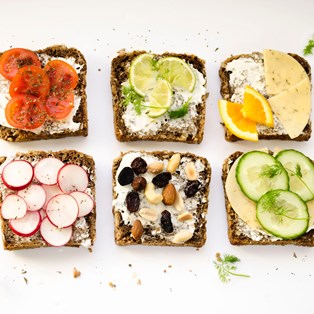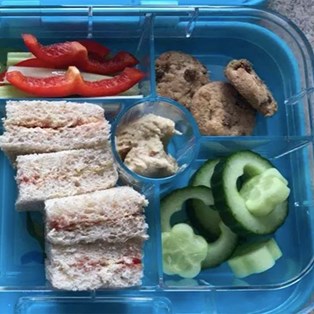Lunchbox ideas for fussy eaters (that aren't boring)

Ensure those lunch boxes come home empty.
By Practical Parenting team
January 21 2020
Across this coming year, more than 500 million school lunches will be packed, globally. But don't panic, we've got some new and exciting ideas for you, especially if your little one is a tad fussy...
Nutritionist Kathleen Alleaumeauthor says there are ways you can make sure a lunchbox returns home empty each day.
“The ideal lunch box should hold enough food to fulfil a child’s energy and nutritional needs while at school and give them enough energy to learn, concentrate and play. For most primary school-aged kids, this means a few portion-controlled snacks, as well as a healthy, varied lunch and water,” she says.
SIX BEST LUNCHBOX TIPS
Involve your child. Encouraging kids to be a part of the preparing, choosing and packing will not only make them more likely to eat their lunch but may also excite them to try something new.
Make it fun. With a little creativity, food can be healthy and fun at the same time. Doing so also brings a sense of enjoyment to eating.
Make a snack-inspired lunch. Children have small stomachs and prefer to graze, rather than eat fewer, bigger meals. Try making lunch in a ‘bento box’ style that contains smaller portions so that children can eat a wider variety, including different flavours, taste and textures. Chopped veggies, different pieces of fruits all work...
Be flexible. Agree to include a treat from time to time, as long as that goody is portion controlled and eaten along with a healthy and balanced meal.
Be practical. Young kids, in particular, want to eat quickly in order to play, so stuffing around with cumbersome wrappers and large portions will only mean half (if any) gets eaten. Make sure the foods are manageable and easy to eat. Remove unnecessary wrappers and chop and slice food wherever possible.
Plan ahead. Make ahead what you can so you can streamline the packing process (e.g. savoury muffins, frittatas, hard-boiled eggs, chopped fruit and vegetables). Dedicate some time each week to plan and prepare, making it quick and easy for children to choose during the morning rush hour.

Getty
Try these....
Try… Fresh fruit
Fruit is a good source of fibre, vitamin C and slow-release energy, particularly when it has edible skin or pith. Pack seasonal fruits cut into bite-sized pieces for convenience and appeal (chopped fruit seems to be more readily eaten than the stuff left whole). You can also freeze fruits such as orange segments to keep them chilled and provide extra cooling for the lunch box. When it comes to fruits that brown easily once cut, such as apples and pears, brush the chopped edges with a little lemon or orange juice to keep things looking fresh.
Try… A bit of dairy
Dairy foods or calcium-rich equivalents are important for growing healthy teeth and bones. Opt for reduced-fat milk, yoghurt and cheese products if your child is over two years of age, or full-fat dairy if they’re younger. Try milk (plain or flavoured), a fruit smoothie or drinking yoghurt and keep it cold with a Thermos® Brand insulated drink bottle. Alternatively, if your child is sensitive to dairy, try a soy equivalent. These contain a similar protein amount and most have been fortified with extra calcium.
Try… A nutrition-packed main course
The main lunch meal, which could be in the form of a sandwich, salad or leftovers from the night before, should be rich in iron and protein. The iron helps your littlie’s immune system while the protein helps with growth and repair. It will also fill your child up and slow the absorption of her food to give her sustained energy for concentration and alertness.
Pack a wholegrain sandwich, wrap or crackers incorporating a protein such as meat, chicken, fish (tuna and salmon are good options), or legumes such as beans and chickpeas (whole or as part of hummus or bean dip). If your little one prefers a salad-style lunch, throw some rice, pasta pieces or even homemade croutons in with the protein. Last night’s dinner can be an attractive choice for the lunch box as it will be familiar to your child and is incredibly convenient. Spaghetti Bolognese, for example, can be kept warm and placed in an insulated food jar so it’s ready to eat as soon as the lunch bell rings.
Try… A home-baked snack
A healthy, home-baked treat is a good source of carbohydrate for energy and fibre for keeping your child’s digestive system in working order. Banana pikelets, scrolls, pumpkin scones or carrot muffins are all great ideas for lunch-box snacks. To make things healthier try to incorporate fresh or dried fruits and reduce the sugar content of your recipes.

Getty
Banana pikelets

Ingredients
• 2 cups self-raising flour
• 2 tablespoons caster sugar
• 2 cups milk
• 2 free-range eggs, lightly beaten
• 2 ripe bananas, mashed
Method
-
Whisk flour, caster sugar, milk and eggs in a bowl until combined. Stir through the mashed banana.
-
Heat a medium-size non-stick frying pan over medium heat and spray with cooking spray. Pour in ⅓ cup batter and swirl to make a 10cm diameter pancake. Cook for 1-2 minutes or until bubbles appear then flip over and cook for a further 30 seconds or until golden brown. Transfer to a plate and keep warm. Repeat to make 12 pancakes.
-
Serve warm with honey drizzled over the top of ice cream, maple syrup and mixed berries.
For more easy and tasty pancakes recipes, try these:
Paleo pancakes
Easy pancakes












